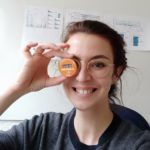Link to Pubmed [PMID] – 35961774
Link to DOI – 10.1101/gr.276953.122
Genome Res 2022 Aug; ():
Teleost fishes are ancient tetraploids descended from an ancestral whole-genome duplication that may have contributed to the impressive diversification of this clade. Whole-genome duplications can occur via self-doubling (autopolyploidy) or via hybridization between different species (allopolyploidy). The mode of tetraploidization conditions evolutionary processes by which duplicated genomes return to diploid meiotic pairing, and subsequent genetic divergence of duplicated genes (cytological and genetic rediploidization). How teleosts became tetraploid remains unresolved, leaving a fundamental gap in the interpretation of their functional evolution. As a result of the whole-genome duplication, identifying orthologous and paralogous genomic regions across teleosts is challenging, hindering genome-wide investigations into their polyploid history. Here, we combine tailored gene phylogeny methodology together with a state-of-the-art ancestral karyotype reconstruction to establish the first high-resolution comparative atlas of paleopolyploid regions across 74 teleost genomes. We then leverage this atlas to investigate how rediploidization occurred in teleosts at the genome-wide level. We uncover that some duplicated regions maintained tetraploidy for more than 60 million years, with three chromosome pairs diverging genetically only after the separation of major teleost families. This evidence suggests that the teleost ancestor was an autopolyploid. Further, we find evidence for biased gene retention along several duplicated chromosomes, contradicting current paradigms that asymmetrical evolution is specific to allopolyploids. Altogether, our results offer novel insights into genome evolutionary dynamics following ancient polyploidizations in vertebrates.

